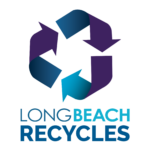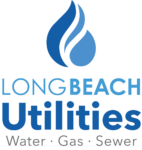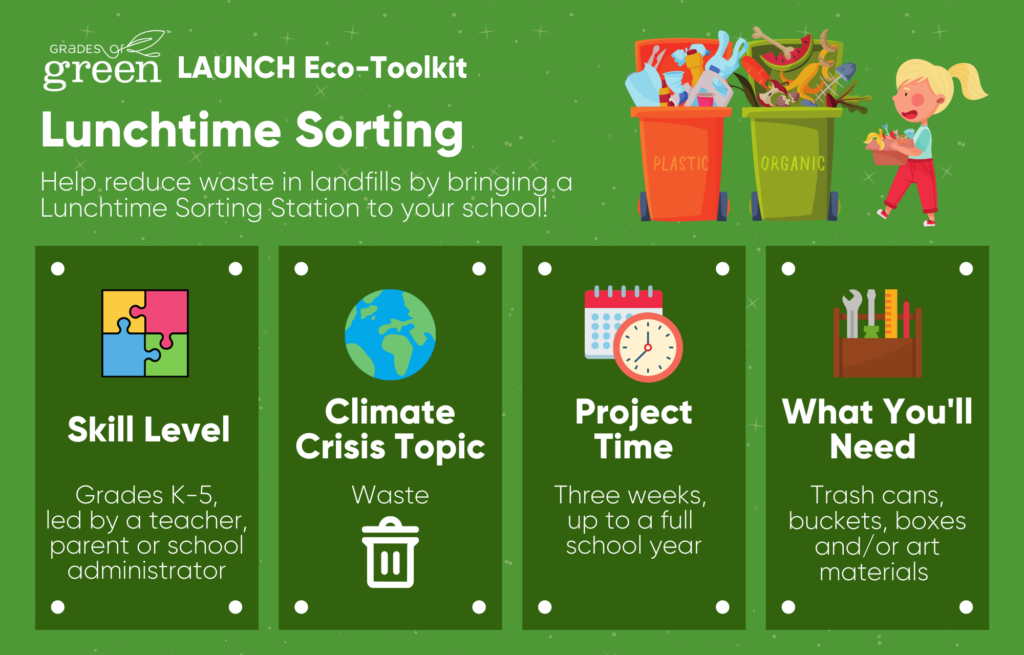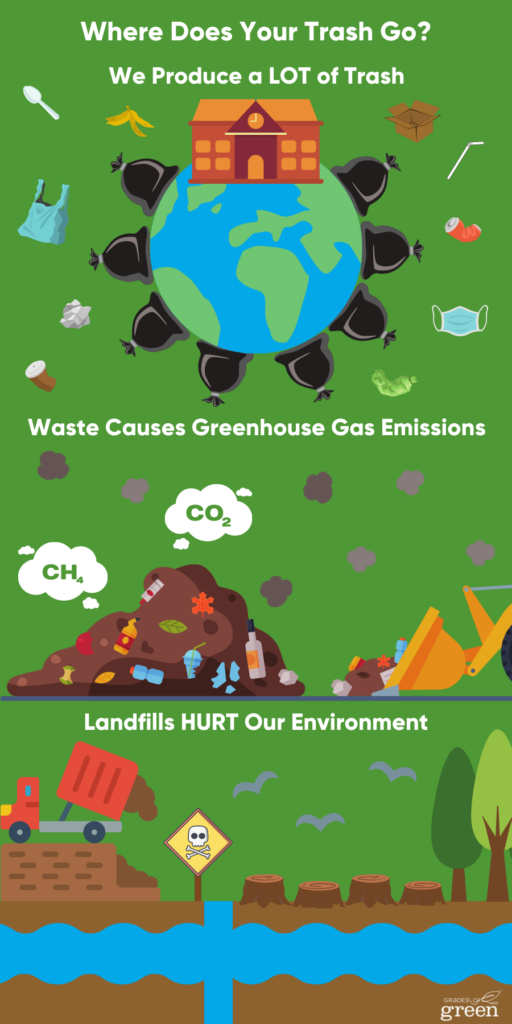Stop! Don’t just toss your lunch tray in the garbage – learn how to sort your trash instead!
Do you ever wonder where your leftover lunch items go? You’ve just finished your lunch and all that is left on your tray is an empty milk carton, a plastic wrapper, a plastic container, and other trash items. Use this Lunchtime Sorting toolkit to separate recyclables, food, and rubbish and decide the fate of your waste!
Want to download this toolkit as a PDF? Click here!
Want to use this toolkit in Español? Click here!




Toolkit Details


NGSS
This toolkit address the following Science and Engineering Practices (SEPs) within the Performance Expectations of NGSS for Grades: K-2 and 3-5
- Asking Questions and Defining a Problem
- Planning and Carrying out Investigations
- Analyzing and Interpreting Data
- Using Mathematics and Computational Thinking
- Obtaining Evaluating, and Communicating Information
Learning Objectives
- Analysis
- Students will analyze their campus to determine the best areas to place lunchtime sorting stations
- Students will track and evaluate the impact of their project
- Project Management
- Set goals on how much waste you want to divert from landfills (EX. bags of trash, weight, trash cans, etc.)
- Students will identify routines to accomplish their goal
- Students will practice leadership skills by delegating tasks to each other
- Evaluation and Assessment
- Students will track and evaluate the impact of their project
Why It’s Important
Our landfills and the Long Beach SERRF (Southeast Resource Recovery Facility) are filling up at an alarming rate often with resources that can be recycled or upcycled and used again. In order to reduce the amount of waste in landfills, it is important to sort out recyclables to get them to the right place. This reduces the amount of trash in the environment and allows us to reuse valuable resources.
What You Will Accomplish
Lunchtime sorting inspires students to take action by creating and using stations that will help your schoolmates recycle some of their waste.
What is Long Beach Doing to Reduce Plastic and Solid Waste?
Long Beach is very focused on recycling correctly and reducing contamination in your waste bins. Be sure to recycle the following items in your purple bin:t plastic bags, jugs, and tubs/containers, aluminum and metal cans, paper and cardboard, and glass bottles and jars [https://www.longbeach.gov/lbrecycles/recycling/recycling-guidelines/]. A common misconception, the City does not follow the numbers and triangular rotating arrows you usually find on single-use plastics known as Resin Identification Codes. These numbers were not created to tell you whether or not the plastic is recyclable which is why going by plastic-type (bottle, jugs, and tubs) is more effective in recycling properly. By starting or continuing your lunchtime sorting stations, you will be helping your city maintain their goals for a less trashy/messy future!
Educator Project Plan
Follow the steps below to set up a successful Lunchtime Sorting Station at your school! Need help? Contact us!
Track your metrics and submit your impact after implementing this toolkit. Your feedback helps keep our programs free for all across the globe.
Determine Participants
Use our Lunchtime Sorting Sign-Up Sheet to create your team!
- A Student Group such as (a club, before/after school program, non-school organization)
- A whole class
- The whole school
- Working with a small group of students? Set up one sorting station with fewer options
- Working with a bigger team? Set up a large sorting station with many options
- Is your whole school involved? Set up multiple sorting stations with every option possible
Where Does Your Trash Go?
The resources provided can be shown as a slideshow or printed out as individual worksheets for students to learn.

We Create A LOT of Trash!
How much do you weigh? Each school year, the average American student creates close to 67 pounds of lunch packaging waste. That’s more than 18,000 pounds of plastic, paper, and other non-food materials for just one normal sized elementary school. Additionally, citizens and businesses in the City of Long Beach alone generate about 368,000 tons of residential, commercial, and industrial waste each year. Reducing trash in landfills is important because it reduces the amount of resources used by landfills and incinerators. [1]
Waste Causes Greenhouse Gas Emissions!
Fossil fuels are mainly used for both the international production of our packaging and disposal of our waste. These fossil fuels give off greenhouse gasses that make Earth hotter and lead to climate change. In 2019, landfills alone produced 91 million metric tons of CO2 in the United States. That’s the same weight as 455,000 blue whales! [2]
Landfills HURT Our Environment
Landfills have a lot of negative effects on our environment including releasing greenhouse gas emissions in the air, making our groundwater dirty, cutting down trees, and reducing the health of soil. Furthermore, biodiversity often decreases with 30-300 species being displaced for every hectare used for landfills. [3]
Why Waste is a Social Justice Issue
Waste is often classified as an environmental justice issue due to the inequalities that exist between low and high income communities. Wealthy neighborhoods are often given more resources to manage waste while disenfranchised communities are frequently left without enough resources to have a clean living environment. The same communities with lower incomes are usually placed close to waste management facilities where additional pollution is harmful to people. Long Beach, like other Southern California communities, had historically trucked its solid waste to neighborhoods outside the City for burial in landfills; however, a closure of a nearby landfill in 1980 led the City to realize they could no longer rely on exporting their solid waste to other neighborhoods. [SERRF (longbeach.gov)]
Watch this short video to learn why it’s important to have less trash
Think About It!
Pre-Activity Questions
- Describe places in your school or community where you can put lunchtime sorting stations.
- What kind of trash do you see? What type of sorting bins should you make?
- Why do you think some people don’t sort their trash?
- Why is sorting trash important for the environment?
- Do you have a trash bin sorting system at home?
Take Action: How to LAUNCH Lunchtime Sorting Stations
Lead students through the “Lunchtime Sorting” activity with guided instructions. Check out “Pro Tips” with each step for useful help:
1. Assign Roles
- Determine who and how many students/staff/volunteers are participating.
- Invite participants to take part in managing lunch sorting responsibilities.
- Use the Lunchtime Sorting Sign-Up Sheet to track additional participants
2. Conduct a Pre-Audit
To understand how waste is managed at your school, it is important to conduct a pre-audit; this can be completed with the Lunchtime Sorting Pre-Project Audit worksheet. Keep note of what you analyze and compare them with your final statistics at the end of the campaign.
3. Design Your Sorting Station Plan
- Think about what type of sorting stations you would like to create.
- Examples of sorting station elements include, refer back to the:
- Recycle (Purple bin) (Learn what can be recycled in Long Beach!)
- Plastic bottles, clean plastic containers, metal cans, glass, clean cardboard
- Use LB Recycles guide to make sure the right items are going in the bin.
- Liquids bucket
- For leftover milk, water, juice, etc. so the empty container can be recycled (all liquids can be dumped down a custodial drain)
- Stack Trays
- Stacking trays greatly reduces the amount of space used in a landfill and the amount of trash bags used
- Place the trays in the landfill bin after being stacked
- Food Donation
- Uneaten/unopened packaged food and whole fruit (see our Food Rescue Toolkit)
- Compost (if using in a compost bin on campus)
- Fruits and vegetables (see our Composting Toolkit)
- OR Food Scraps (if getting picked up by Long Beach Waste Hauler)
- All food scraps including leftover fruit, veggies, meat, bread, etc
- Landfill/Trash
- All other items including those contaminated with food, flimsy plastic wrappers, chip bags, bag
- Recycle (Purple bin) (Learn what can be recycled in Long Beach!)
- Examples of sorting station elements include, refer back to the:
- Determine the location of your sorting station(s).
- Look at a map of your school. Determine where sorting stations should be placed.
- Check out this activity booklet provided by the City of Long Beach!
- Long Beach schools receive recycling services from the City at no extra cost.
- Add a pair of trash grabbers or tongs to each bin in case items were tossed in the wrong bins.
- Add a strainer to your liquids bucket/bin to filter out any accidental solids dropped into the liquids bucket. Remind kids to pour out liquids close to the top of the bucket so it doesn’t splash on them or their friends!
- Contact your school’s tray manufacturer to see if they collect used trays for recycling.
4. Present Your Plan
Present your sorting station plan to the right administration/staff members and educate them about why sorting stations are important for waste reduction. Also, ask individuals like your principal, vice principal, or head custodian for materials to make your plan happen! This can include trash cans, buckets, boxes, and trash bags.
5. Prepare Your Materials
Gather your sorting station supplies. This can include:
- Paper
- Writing utensils/Art supplies
- Tape
- Glue
- Trash cans
- Trash bags
- Buckets
- Boxes
Start making your sorting stations! Click here for some examples and here for signs you can print out!
6. Let People Know
Inform people about your sorting project! You can do this by conducting a walking assembly and presenting the provided Lunchtime Sorting Walking Assembly Script to your classmates.
7: Set a Schedule
Use our Lunchtime Sorting Organizer worksheet to set up a schedule for participants to monitor the sorting stations. If you have multiple stations, have a schedule for each station.
8: Sort It Out
Now it’s time to put all your hard work into practice! Set up your lunchtime sorting stations and start your campus sorting. Use our Lunchtime Sorting Post-Project Audit worksheet to track your group’s progress. Collect sheets weekly to keep track of your impact.
Reflection Questions
How’d It Go?
Student Reflection
- What were some great things that happened during your project?
- What could you do to get more people involved next time?
- What other ways could you keep trash away from landfills?
- Which sorting station was used the most? In other words, what was the most commonly sorted item?
- Would you like to set up your own waste sorting station at home?
Report Students’ Impact
Congratulations!! You’ve implemented Lunchtime Sorting! Don’t let all that hard work go unnoticed. Submit your results by clicking the green button below.
Project ongoing? No problem! Let us know what you’ve done so far.
By reporting your impact, Grades of Green can:
- CELEBRATE and elevate your students’ hard work and success.
- Offer our programs FREE for all students across the globe.
- AWARD stipends and certificates to hard-working educators and students.
Please take a few minutes to submit your results. Thank you!
Provided Resources
- Lunchtime Sorting Sign-Up Sheet
- Lunchtime Sorting Pre-Project Audit worksheet
- Lunchtime Sorting Post-Project Audit worksheet
- Lunchtime Sorting Walking Assembly Script
- Lunchtime Sorting Organizer
- Lunchtime Sorting Slides
- Lunchtime Sorting Wrap Up Form
- Sorting Station Examples
- Printable Signs
- Toolkit Resources – Google Drive Folder
Congrats on completing the Lunchtime Sorting Eco-Toolkit!
Did you enjoy this toolkit? Find your next project here!